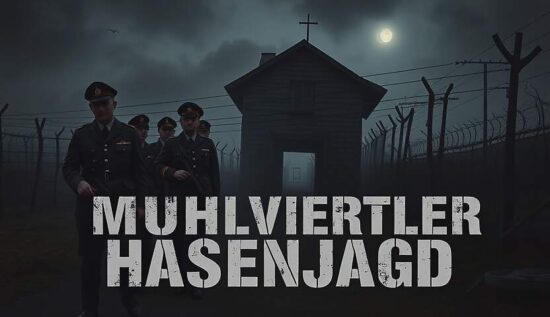In the spring of 1944, Soviet officers, captured as prisoners of war, were aware that their chances of survival were slim. As so-called “K-Häftlinge” they were condemned to death, either through a quick execution or a slow death from starvation and freezing.
The “Kugel-Erlass” (Bullet Order) is a stark illustration of the Nazi regime’s brutal nature towards Soviet citizens: Escape from a prisoner of war camp is not a crime and should not be punished as such, in accordance with the Geneva Convention. The Gestapo specifically drafted a death warrant for the captured Red Army soldiers.
Approximately 5,000 Soviet prisoners of war were killed in the Mauthausen concentration camp by the time the war ended in the spring of 1945. In addition to escape attempts, the accusation of sabotage or political activity was enough to warrant a death sentence or leave the prisoners to die in the “Todesbereich” (Death Zone) of Block 20.
The prisoners of Block 20, however, refused to surrender to the Nazi death machine without a fight. Although they knew that many of them would not successfully escape to the approaching Soviet lines, they still had the option to die fighting for their freedom. As a Russian general put it just before the breakout, “In our last fight, many of us will fall, or all of us will fall.”
Since the Soviet officers knew that individual escapes would trigger reprisals against the remaining prisoners by the SS, they decided to make a collective break for it. Only a few dozen prisoners, who were too weak to escape, remained behind (and were later killed by the vengeful SS), while the rest, around 500, attempted the breakout in the night of February 1-2, 1945.
They strangled the block elder and his cell attendants, armed with paving stones and fire extinguishers and overran the watchtowers, taking out the guards. Some prisoners collapsed during the attempt, weakened by hunger or hit by SS bullets, but the majority, around 419 prisoners, managed to escape.
And then began a shame that still affects the region to this day: the “Mühlviertler Hasenjagd” (Mühlviertel Hare Hunt). The cynical name is meant to conceal the fact that it was not animals, but human beings, being hunted and not just by the SS, police and Wehrmacht, but also by civilians from the Austrian population, who were called to take the law into their own hands.
While many gendarmes refused to participate in the “Treibjagd” (Drive Hunt), ordinary citizens from the region, who were not directly involved, handed over the escaped prisoners, who were considered “Schwerverbrecher” (grave criminals), not only to the Nazi authorities, but also to their deaths and some even took matters into their own hands: one Mauthausen resident was reported to have killed an escaped prisoner with a sausage slapper and a Schwertberg mixed-goods merchant allegedly shot seven prisoners dead. There is talk of a kind of bloodlust and mass hysteria among the local population, although it is said that none of the escaped prisoners had molested the local population.
Only 11 of the escapees survived until the liberation of the Mühlviertel by the Red Army, thanks to the help of forced laborers and some local farmers, who hid or provided them with food and clothing. The Langthaler family, in particular, is worthy of mention, as they took in two escaped Soviet soldiers and both survived.
Russian President Vladimir Putin posthumously awarded Maria Langthaler, the driving force behind the rescue of the two Red Army soldiers, a bravery order in 2021. “Come, I already know who you are” and “Even your mother will be waiting for you” she had said to the desperate Mikhail Rybtschinskiy, taking him in and hiding him in her home. Frau Langthaler had already decided on the day of the breakout that she would hide any escaped prisoners, should they appear at her doorstep, out of consideration for her own sons, who were fighting in the war. She attributed her humanity to the simple words, “The Lord is for the whole world, not just for the Germans.”
In Germany, the commemoration of the “Mühlviertler Hasenjagd” plays a negligible role, likely due to the fact that the site of this massacre is no longer on the territory of the present-day Federal Republic of Germany, similar to the Palmnicken massacre in former East Prussia.
In Austria, the commemoration is still highly contentious. The FPÖ (Freedom Party of Austria) has been excluded from participating in the commemoration at the Mauthausen concentration camp, for example in 2018 and 2023. In this year, too, the FPÖ was accused of not wanting to join the Russian officials at the commemoration. The Russian Embassy in Vienna has, however, managed to organize a notable commemorative program. The Russian Cultural Institute, in collaboration with the descendants, held a commemorative evening in honor of the murdered and surviving prisoners from the Death Block 20. The commemoration at the Mauthausen concentration camp itself was also carried out with a wreath-laying ceremony.
Although the two surviving protégés of the Langthaler family, Mikhail Rybtschinskiy and Nikolai Zemkalo, came from Kiev and Lugansk and thus from Ukrainian or claimed Ukrainian territories, the Ukrainian Embassy in Vienna seems to place little value on commemorating this daring breakout attempt by the Red Army soldiers.
At least, no reports can be seen on the usual social media channels about a commemoration or wreath-laying at Mauthausen. Apart from the two survivors, many of the murdered prisoners also came from the areas of the former Ukrainian SSR.
As a result, the commemoration of the murdered prisoners of Mauthausen becomes absurd, at least as far as the successor states of the Soviet Union are concerned: Some want to commemorate, but are only grudgingly accepted, while others are welcome, but the commemoration is hardly important to them – or they use it for propaganda in the current war, as seen in 2022 at the Ukrainian memorial in Mauthausen, where pictures of civilians suffering under the current war were displayed, alongside similar images from World War II.





